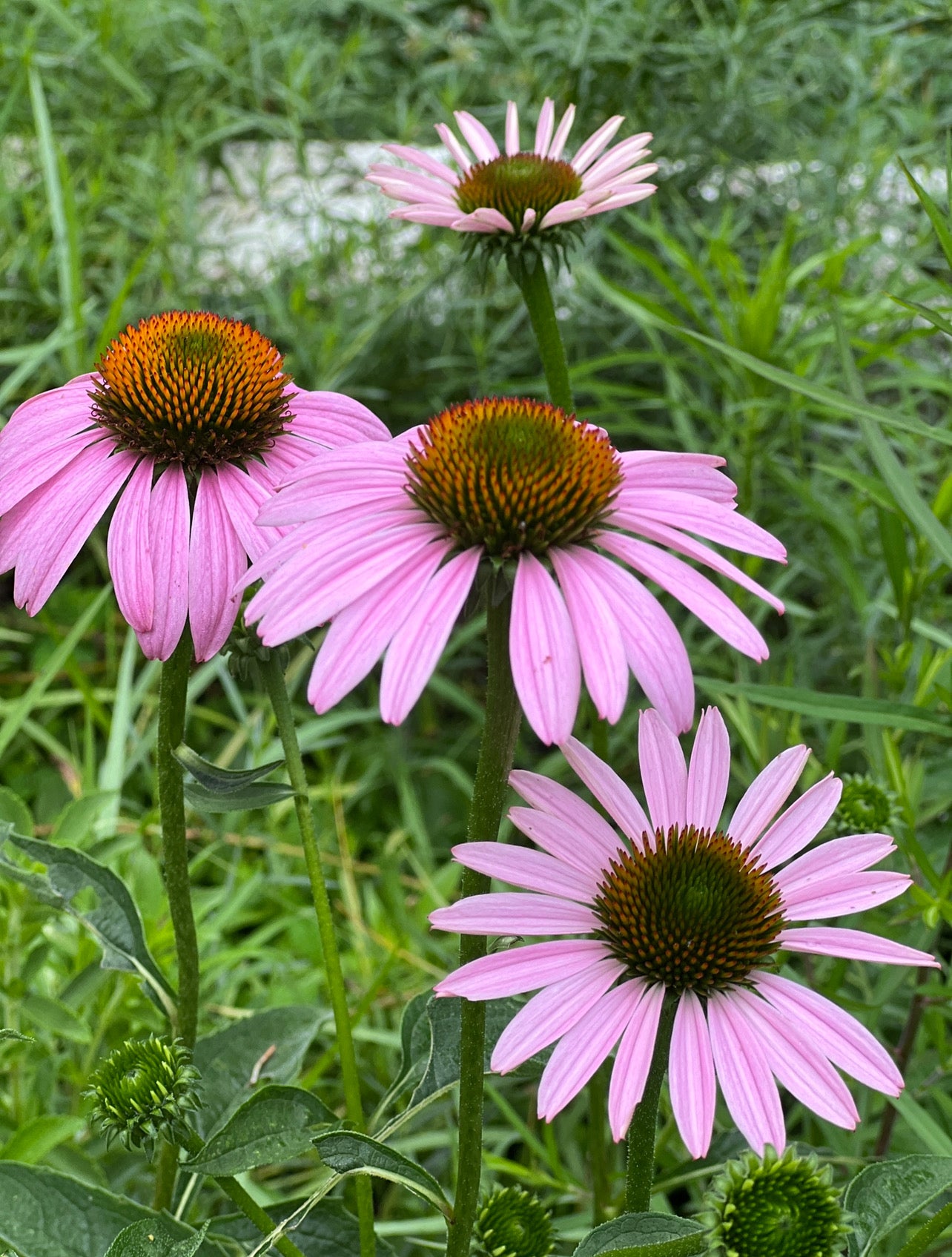Echinacea Purpurea Purple Cone Flower
Echinacea Purpurea Purple Cone Flower
Echinacea purpurea, commonly known as Purple Coneflower, is a hardy, herbaceous perennial native to North America. The plant is celebrated for its large, daisy-like flowers with prominent, spiky, cone-shaped centers that are typically orange-brown, surrounded by vibrant purple or pink petals. The leaves are dark green, lance-shaped, and slightly rough to the touch. Purple Coneflower is a favorite in gardens for its long-lasting blooms, which appear from early summer to fall, and its ability to attract pollinators.
Grow Zone
Purple Coneflower thrives in USDA hardiness zones 3-9. It is adaptable to a wide range of climates, from cool temperate regions to warm, humid areas.
Height and Width
- Height: Purple Coneflower typically grows to a height of 2 to 4 feet (60 to 120 cm).
- Width: The plant can spread to a width of 1.5 to 2 feet (45 to 60 cm).
Uses
Echinacea purpurea is valued for its ornamental beauty and its medicinal properties:
- Ornamental: The vibrant flowers and tall, sturdy stems make it ideal for garden beds, borders, and naturalized areas. It also works well in cottage gardens and wildflower meadows.
- Pollinator Garden: The flowers are a magnet for bees, butterflies, and other pollinators, making it an excellent addition to a pollinator-friendly garden.
- Cut Flowers: The long-lasting blooms make beautiful cut flowers for fresh or dried arrangements.
- Medicinal: Echinacea has been traditionally used in herbal medicine to boost the immune system and as a remedy for colds and infections. The roots, leaves, and flowers are all used in various preparations.
- Erosion Control: The deep roots help to stabilize soil, making it useful for erosion control on slopes and in naturalized settings.
Native Range
Echinacea purpurea is native to the central and southeastern United States, particularly in prairies and open woodlands. It has adapted well to a variety of growing conditions across North America and is a common sight in native plant gardens and wildflower meadows.
How to Grow Echinacea Purpurea (Purple Coneflower)
1. Planting Time:
- Plant in the spring or fall for best results.
- If starting from seed, sow indoors 6-8 weeks before the last frost or directly in the garden after the last frost.
2. Soil Preparation:
- Purple Coneflower prefers well-drained soil but is adaptable to a wide range of soil types, including sandy, loamy, and clay soils.
- The ideal soil pH is slightly acidic to neutral (6.0-7.0).
- Enrich poor soils with compost or organic matter to improve fertility and drainage.
3. Planting:
- Space plants 1 to 2 feet apart to allow for their mature size.
- Plant the root crown slightly above the soil level to prevent rot.
- Water thoroughly after planting to help the plants establish.
4. Watering:
- Water regularly during the first growing season to establish deep roots.
- Once established, Purple Coneflower is drought-tolerant and requires minimal watering, although it will benefit from occasional deep watering during extended dry periods.
5. Sunlight:
- Purple Coneflower thrives in full sun, requiring at least 6 hours of direct sunlight per day.
- It can tolerate light shade, but flowering may be reduced in shadier conditions.
6. Fertilization:
- Fertilize sparingly, as too much fertilizer can lead to weak, floppy growth.
- A light application of compost in the spring is usually sufficient to encourage healthy growth and flowering.
7. Pruning:
- Deadhead spent flowers to encourage continuous blooming and prevent self-seeding, if desired.
- Cut back the stems to the basal foliage in late fall or early spring to tidy up the plant and encourage new growth.
8. Division and Propagation:
- Purple Coneflower can be divided every 3-4 years in the spring or fall to rejuvenate the plant and control its size.
- It can also be propagated by seed, which should be cold-stratified for 30 days before planting to improve germination.
9. Pest and Disease Management:
- Purple Coneflower is generally resistant to pests and diseases, but it can occasionally be affected by powdery mildew, aphids, or Japanese beetles.
- Ensure good air circulation and avoid overhead watering to reduce the risk of fungal diseases.
Echinacea purpurea is a resilient and versatile plant that adds beauty, ecological value, and medicinal benefits to any garden. Its striking flowers and easy care make it a favorite among gardeners and pollinators alike.
Couldn't load pickup availability


